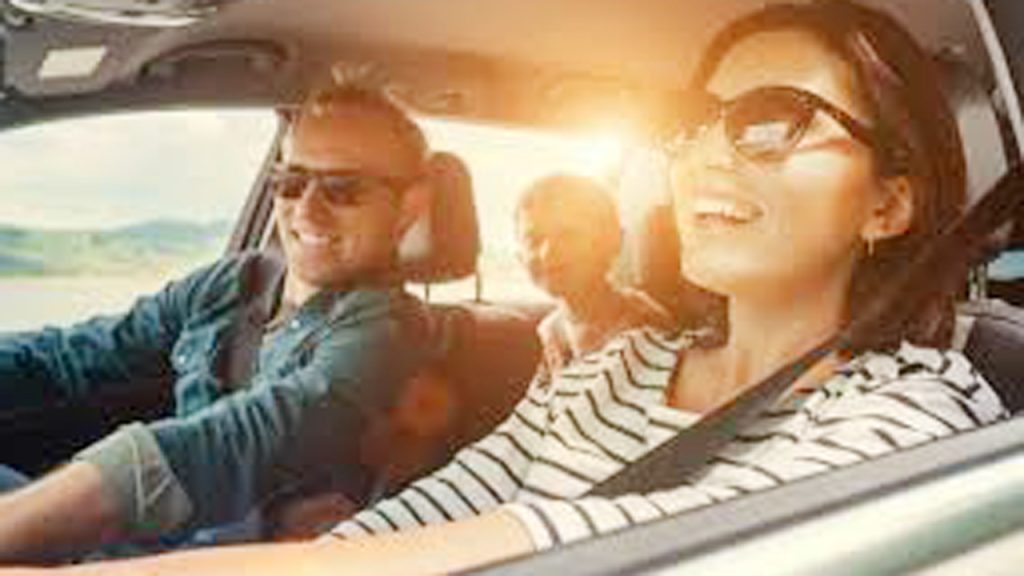If you’re thinking about using photochromic lenses for driving, you’re likely attracted to their light-responsive technology, which darkens in sunlight and clears indoors. This feature can be extremely convenient if you’re often transitioning between outdoor and indoor environments.
Photochromic lenses aren’t the ideal choice when it comes to driving, particularly for long trips or changing weather conditions. In this article, I’ll walk you through why photochromic lenses don’t work well for driving, the technology behind them, and some alternatives that could better suit your needs on the road.

theaa
What Are Photochromic Lenses and How Do They Work?
Photochromic lenses are lenses that automatically adjust their tint based on the amount of sunlight or UV exposure. When exposed to UV rays, the molecules in the lens change structure, causing the lens to darken. When the UV exposure lessens, like indoors, the lenses revert to their clear state. This makes photochromic lenses quite versatile, especially for people who move frequently between sunlit and shaded environments.
How Quickly Do Photochromic Lenses Change?
The speed at which photochromic lenses transition from clear to dark varies depending on the brand and type. Most lenses take a few seconds to start darkening but may take several minutes to reach their full tint. Reverting to clear can take even longer, especially in colder conditions, which can be a drawback if you need quick adaptation.
Why Photochromic Lenses Are Not Ideal for Driving
While the adaptability of photochromic lenses might seem appealing for driving, several factors make them unsuitable. Let’s dive into the key reasons why these lenses fall short when it comes to on-the-road use.
Limited Activation Behind a Car Windshield
One of the primary limitations of photochromic lenses in cars is that they don’t work as effectively behind a windshield. This is because most car windshields are treated to block a significant portion of UV rays, which are necessary for photochromic lenses to activate. Since UV rays are filtered out, the lenses remain relatively clear or, at best, only slightly tinted, providing minimal protection from glare and bright sunlight while driving.
Slow Transition Times
When driving, lighting conditions can change rapidly, especially if you’re driving through shaded areas, tunnels, or during changing weather. Photochromic lenses typically don’t adjust fast enough to match these quick shifts in light, which can leave you momentarily exposed to harsh light or make it difficult to see clearly in low-light conditions.
Ineffectiveness During Night Driving
For night driving, photochromic lenses offer no benefit, as they remain clear in low-light conditions. Additionally, the slight tint they may retain could reduce your vision clarity, particularly in already dim or poorly lit areas. In these situations, anti-reflective coatings or specific nighttime driving glasses would be far more suitable.
Poor Performance in Cold Weather
Photochromic lenses tend to darken more slowly in cold weather, which can be particularly problematic if you live in or are driving through colder climates. The slow reaction time can impact how quickly your lenses adapt to sunlight, increasing glare and eye discomfort.
Comparison of Photochromic Lenses and Polarized Sunglasses for Driving
| Feature | Photochromic Lenses | Polarized Sunglasses |
|---|---|---|
| Primary Purpose | UV protection, adaptable tint | Glare reduction, eye comfort in bright sunlight |
| Effectiveness in Cars | Limited (less UV exposure behind windshields) | Highly effective in reducing glare and reflections |
| Transition Speed | Slower transition, especially in cold conditions | Instant; no adjustment needed |
| Night Driving | Not recommended | Not recommended |
| Glare Protection | Limited; depends on tint level achieved | Excellent; effective at reducing road and water glare |
| Ideal Use | Outdoor, varied environments | Driving, sports, outdoor activities |
When Are Photochromic Lenses Useful for Driving?
While photochromic lenses are generally not recommended for dedicated driving glasses, there are a few specific driving situations where they might be somewhat helpful:
Short trips in varying outdoor lighting conditions: If you’re primarily outdoors and occasionally hopping into the car for short trips, photochromic lenses can offer some minimal sun protection.
Sunroof-equipped vehicles: Sunroofs often allow more UV light to enter, which can activate photochromic lenses more effectively than a fully shielded windshield, but effectiveness still varies.
Alternatives to Photochromic Lenses for Driving
If you’re looking for optimal eye protection and comfort while driving, here are some recommended alternatives to photochromic lenses.
Polarized Sunglasses
Polarized sunglasses are a top choice for driving due to their ability to reduce glare from reflective surfaces like wet roads, car hoods, and other vehicles. Unlike photochromic lenses, polarized lenses work well even behind UV-blocked windshields, providing reliable comfort in bright daylight conditions.
Prescription Sunglasses
If you need vision correction along with sun protection, prescription sunglasses are a great alternative. These glasses are custom-made to your prescription and come with various tint and polarization options for optimal driving visibility.
Anti-Reflective Coatings
For those who drive frequently at night or in low-light conditions, glasses with anti-reflective coatings can help reduce glare from headlights and streetlights, improving night vision clarity. These coatings are clear, so they don’t interfere with vision or add tint.
Pros and Cons of Photochromic Lenses for Driving
Pros
- Convenience: Great for those who frequently move between outdoor and indoor settings.
- UV Protection: Provides ample UV protection in direct sunlight.
Cons
- Limited Tint Activation: Windshield UV protection reduces lens effectiveness.
- Slow Transition Speed: Lenses don’t adapt quickly enough for sudden light changes.
- Reduced Night Vision: The slight tint may impair vision in low-light conditions.
FAQs About Photochromic Lenses for Driving
Can photochromic lenses replace sunglasses for driving?
While photochromic lenses are convenient outdoors, they don’t work as well for driving due to limited tinting behind UV-blocking windshields. Polarized sunglasses are a better alternative for reducing glare and enhancing visibility on the road.
Do photochromic lenses work in all lighting conditions?
Photochromic lenses work best in outdoor sunlight. They’re less effective indoors and in environments with UV-blocked glass, like car windshields.
Are there photochromic lenses specifically designed for driving?
Some brands offer “drivewear” lenses that combine photochromic and polarization features, designed specifically to perform better behind windshields, though they still don’t replace traditional sunglasses for full glare protection.
Conclusion
For most people, photochromic lenses fall short when it comes to driving, particularly in terms of quick adaptability, tint strength, and glare reduction. Their primary benefit lies in outdoor environments where UV exposure is high. For drivers, polarized sunglasses, anti-reflective coatings, and prescription sunglasses remain better choices. While photochromic lenses offer convenience, if your primary concern is driving, consider alternatives that provide effective, safe, and comfortable vision on the road.

Hello! My name is Sherin, I am a glasses lover. Always love to research new topic about glasses and share them with my audience.
If you are a glasses lover like me then you can follow our blog regularly and learn what we discuss on this website.
